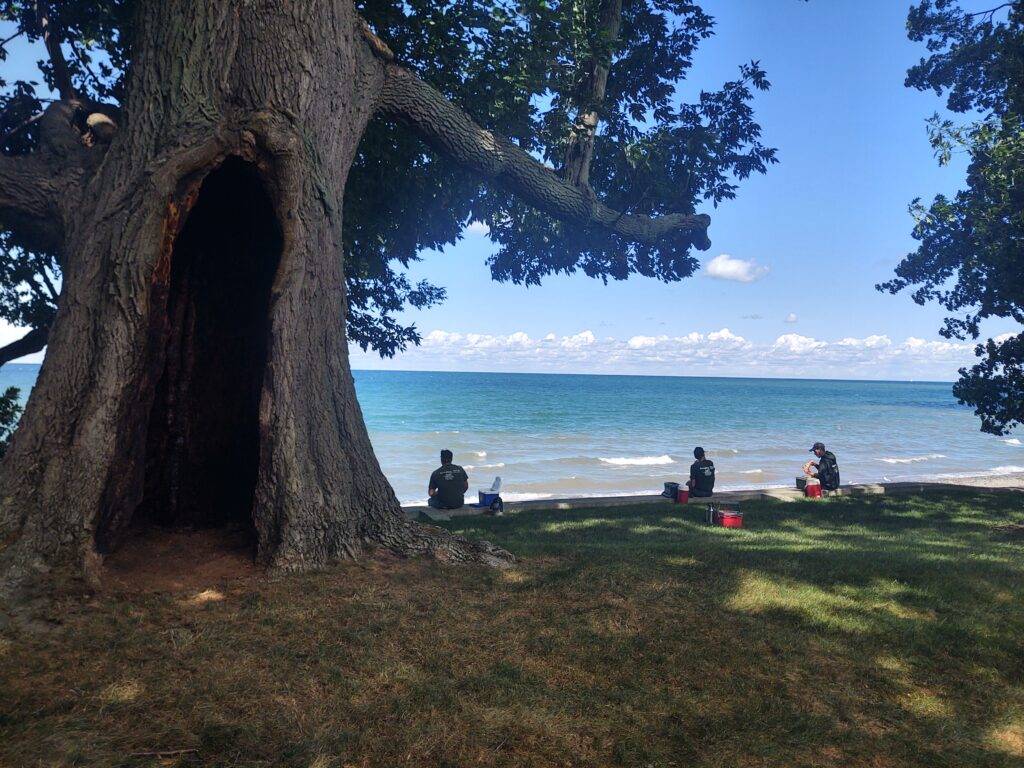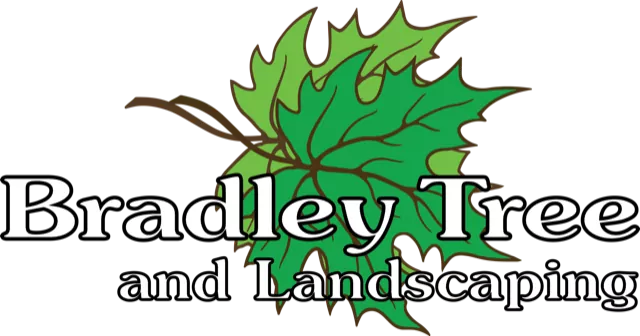Nobody likes to see a dead or dying tree, especially the tree care experts here at Bradley Trees. But sometimes it can be difficult to determine whether a tree is actually sick and dying before it gets to be too late. Today, we’re putting together a little guide on how to identify dying trees. Maybe you’ll catch it early and the best plant healthcare in Buffalo done by the premier tree care service can save the tree.
Sometimes trees do make it easier to identify when they’re dying, like leaves that brown in the Summer or branches being battered with holes. However, signs are typically more subtle and may require you to contact your local ISA certified arborist.

Sign 1 of a Dying Tree | It has brown and brittle bark, might have cracks running up it.
The bark on a dying tree dries out and browns. It also gets loose and will start peeling and falling from the tree. The tree may start developing vertical cracks up the trunk or have a bare trunk showing where bark used to be. Keep on the lookout for deep splits in the bark that cut into the wood of the tree. Cracks can become weak points in trees that can cause damage in storms or other weather events.
Sign 2 of Dying Tree | Most of the leaves are dying.
This is more for deciduous trees but look to the leaves on the branches. Leaves should be lush, vibrant, and covering the branch. If it’s the growing season and your tree’s branch only has leaves that are brown and brittle, your tree is likely on its last legs.
Also, heading into winter these dead leaves will still cling to the tree rather than fall to the ground. Now, this itself isn’t a flag for concern – many trees retain some of their leaves in the winter due to a process called marcescense. Some don’t fall off until the next Spring when new leaf buds force them off. However, you should remember – if you’re unsure please call a WNY licensed arborist to take a look. In the best case, your tree is actually healthy and everyone is happy.
For coniferous trees, take a look at the needles. A stressed or dying tree will start to show red, brown, or yellow needles.
Sign 3 of Dying Tree | The tree has an abundance of deadwood.
Remember, keeping up with some regular tree pruning will keep your trees healthy. Some dead branches and wood isn’t necessarily a red flag for a dying tree. But if the amount of deadwood begins to sharply increase that can indicate the tree is sick or dying. If the amount of sticks and twigs you see is alarming to you, you know who you should call.
Sign 4 | Your tree is hosting creepy crawlies and fungus
Dying trees can be host to pests like bark beetles, termites, ash borers, carpenter ants and others. These problematic pests prefer to live in trees that are dead, dying, or otherwise weakened.
Fungal or bacterial problems can be highlighted by discolored areas or indented places on the bark. Mushrooms growing on the ground, the base of the tree, or on the tree itself are also bad news. These indicate signs of rot in the roots or trunk. If you see any fungus, call Bradley Trees immediately. Sometimes it can be treated with some plant healthcare from the experts, but other times the damage will be so extensive that saving it is impossible.
Sign 5 | Root damage signs
Roots run underground so it’s not always easy to tell if they are damaged, but if the damage is visible you might need a local, wny tree removal service to take the tree. Remember, excavation and construction can damage roots. The damage that they cause by soil compaction might not show itself for some time. Root damage signs can be thinning foliage, poor growth, yellow-ish and undersized leaves, dead branches, and leaves that are wilted, brown and brittle during the growing season.
Sign 6 | It develops a lean
Sometimes, trees grow in leaning. If it didn’t, trees that grow in strange directions are generally a sign of general weakness or structural damage. Leaning trees should not be a thing. If the tree is leaning more than 15 degrees from vertical its likely fatally wounded from root or wind damage. A professional tree service can brace the tree to prevent its sudden collapse, but don’t expect it to save the tree. Generally speaking, if a tree is leaning it has been fatally incapacitated.
Sign 7 | The layer under the bark isn’t green
Beneath the outer bark of the tree is the cambium layer. This layer is supposed to be green on a living tree. In a dead or dying tree, it will be brown and dry. A few spots may need to be tested to ensure that the whole tree is dead and now just a few branches.
Sometimes dying trees can be saved with the right mix of skill, preparation, luck and plant healthcare. Other times, they cannot be saved and you will need a tree removal service.
Get in touch with the Tree Care Experts!
Make sure to stay up to date with our blog! We regularly post helpful hints and little guides for all things trees and landscaping in WNY. We also have a Facebook page you can “Like” us on, seeing some behind-the-scenes fun, and a YouTube to subscribe to! Make sure to contact us for all your tree service and landscaping needs, or if you just need tree risk management or assessment. You can give us a call or fill out a form online!

